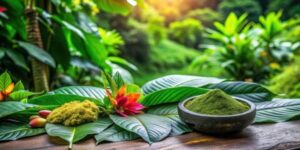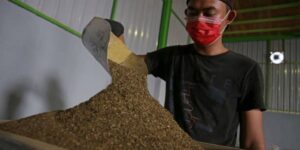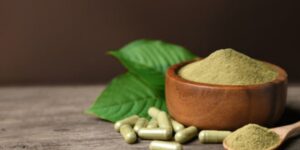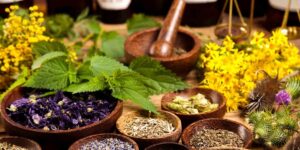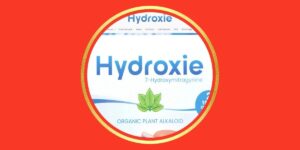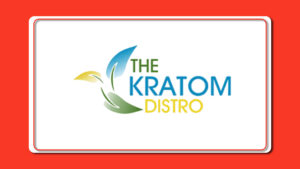Kava kava, often just called kava, has been a staple in traditional medicine and cultural ceremonies for centuries. Traditionally, it’s prepared by mixing it with water or brewing it into a tea, but these days, you can also find it conveniently available in tablet form.
Research indicates that kava kava might help ease mild anxiety, but it comes with a serious risk of liver damage. While it’s still legal to buy and sell kava in the United States, the FDA advises approaching it with caution to prioritize your health and safety.
In this article, we dive into everything you need to know what is kava, its uses, benefits, safety tips, potential drug interactions, and the best ways to incorporate it into your routine.
What is Kava? Origins and Background
Kava, scientifically known as Piper methysticum, is a plant native to the Pacific Islands, including Fiji, Vanuatu, Hawaii, and Polynesia. For centuries, indigenous cultures have used kava in social and ceremonial contexts, preparing it as a traditional beverage that promotes relaxation and social bonding.
Cultural Significance
In Pacific Island cultures, kava holds deep cultural importance. Traditional preparation involves grinding or chewing the root and mixing it with water to create a ceremonial drink consumed during social gatherings, rituals, and important community events.
Active Compounds
Kava contains kavalactones, the primary active compounds responsible for its therapeutic effects. These compounds interact with the brain’s neurotransmitter systems, particularly GABA receptors, which play a crucial role in promoting relaxation and reducing anxiety.
Effects of Kava
Studies suggest kavalactones may have the following effects on the body:
- Reducing anxiety
- Protecting neurons from damage
- Reducing pain sensations
- Reducing the risk of cancer, though the evidence is limited to mice research
Most of the research so far has zeroed in on Kava’s ability to help ease anxiety.
While the exact science behind it is still a bit of a mystery, it seems that kavalactones work their magic by influencing neurotransmitters, those chemical messengers that help nerve cells talk to each other in the brain.
What is Kratom?
Kratom is another crowd favorite at kava bars, but it’s worth noting that it comes with a higher risk of physical dependence. Kratom is a leaf collected from a tree in the coffee family that has significant psychoactive properties.
This substance is believed to offer a range of potential health benefits, from naturally easing depression and anxiety to helping with addiction recovery, managing diabetes, relieving chronic pain, and boosting energy for those dealing with fatigue.
Many individuals experience an increase in energy, elevations of mood, and relief from pain when on Kratom.
The effects don’t last long, which naturally makes you want to take more over time. While the benefits can be repeated, it doesn’t take long before physical dependence starts to set in. The nature and severity of the physical dependence caused by regular Kratom use resembles that seen with opioids such as oxycodone and heroin.
What impact does Kava & Kratom have on the community?
The rising number of relapses linked to these substances is deeply concerning, sparking community-driven efforts to tackle the issue head-on. Several Florida municipalities, including both Broward and Palm Beach Counties, have made unsuccessful attempts to ban Kratom. Sarasota County did succeed in banning Kratom in 2014.
The federal government once considered banning kratom, but the move was reversed before it could be enforced. However, a few states, Alabama, Arkansas, Indiana, Rhode Island, Vermont, and Wisconsin—have fully outlawed kratom, making its use, possession, and purchase illegal.
Across the nation, Kava and Kratom remain a hidden risk to public health, quietly impacting many people. Greater awareness and vigilance regarding the high risks of consuming these substances, especially for individuals in addiction recovery, will continue to be the primary means of trying to contain this public health crisis until a definitive legal solution can be found.
Forms of kava
Kava can be taken in tea, capsule, powder, or liquid form.
Except for kava tea, these products are made from a concentrated mixture that’s prepared by extracting kavalactones from the plant’s root with ethanol or acetone.
1. Kava tea
Many people prefer enjoying kava as a tea to help with anxiety, thanks to how easily accessible and convenient it is. It’s sold alone or alongside other herbs touted to promote relaxation and brewed using hot water.
Make sure to choose kava teas that list the kavalactone content and any other ingredients, so you know exactly what you’re getting in every cup! Avoid teas that list the ingredients as “proprietary blends.” You will not know how much kava you’re getting with these products.
2. Kava tincture or liquid
This kava comes in a liquid form, conveniently packaged in small bottles that range from 2 to 6 ounces (59 to 177 milliliters). You can take it with a dropper or mix it into juice or another drink to cover its whiskey-like taste.
When using kava tincture or liquid, it’s crucial to start with a small dose. Since the kavalactones are highly concentrated, these forms of kava are much stronger than others.
3. Kava capsules
If you’re not a fan of kava’s taste, no worries! You can easily take it in capsule form instead.
When choosing kava tea, make sure to check for products that mention the kavalactone content. For example, one capsule may contain 100 milligrams (mg) of kava root extract that is standardized to contain 30% kavalactones.
Benefits of Kava
1. Anxiety Reduction
- Kava has gained significant attention for its potential to alleviate anxiety. Research suggests that kavalactones can help:
- Reduce symptoms of generalized anxiety disorder
- Promote a sense of calm without causing significant sedation
- Provide an alternative to pharmaceutical anti-anxiety medications
2. Stress Management
- The natural compounds in kava may help:
- Lower cortisol levels
- Improve stress response
- Enhance overall emotional well-being
3. Sleep Support
- Kava may assist individuals struggling with sleep issues by:
- Promoting relaxation
- Reducing the time taken to fall asleep
- Improving overall sleep quality
4. Muscle Relaxation
- Some users report that kava helps:
- Reduce muscle tension
- Alleviate mild muscle pain
- Promote physical relaxation
How to Use Kava?
1. Preparation Methods
- Traditional Preparation
- Ground root mixed with water
- Strained and consumed as a drink
- Typically prepared in a communal setting
2. Modern Consumption Options
- Liquid extracts
- Capsules
- Powdered supplements
- Tea preparations
Kava Dosage
Experts suggest keeping your daily kavalactone intake below 250 mg to ensure safe and effective use. An effective dose of kavalactones is 70 to 250 mg.
Kava supplements often show the amount of kavalactones either in milligrams or as a percentage on the label. If the content is listed as a percentage, you will need to calculate the amount of kavalactones it contains.
Here’s an example to make it clearer: If a capsule has 100 mg of kava root extract and is standardized to have 30% kavalactones, you’d get 30 mg of kavalactones in that capsule (100 mg x 0.30 = 30 mg).
To get an effective dose of kavalactones, which falls between 70 to 250 mg, you’ll need to take at least three capsules of this supplement. Most extracts of kava root contain 30% to 70% kavalactones.
Potential Side Effects of Kava
- Liver Toxicity: Several cases of liver damage associated with kava consumption were reported in the early 2000s.
- Drug Interaction: Kava may harm the liver by interacting with drugs processed by the same liver enzymes, potentially causing harmful drug buildup.
- Adulteration Risks: Some kava products may be mixed with harmful materials during processing.
- Use of Unsafe Plant Parts: Some companies use kava leaves or stems instead of roots, which are known to harm the liver.
Kava may be safe for individuals without liver issues or conflicting medications when used in appropriate doses for 1–2 months.
Wrapping Up
Kava offers promising benefits, especially for reducing anxiety and promoting relaxation. While its traditional use has deep cultural significance, modern-day consumers must be mindful of its potential risks, particularly liver toxicity.
It’s essential to be aware of the form in which you consume kava, the dosage, and the quality of the product you choose to ensure safety. Always consult with a healthcare provider if you have underlying health conditions or take medications that may interact with kava. With the right precautions, kava can be a helpful tool for managing stress and anxiety in your wellness routine.


